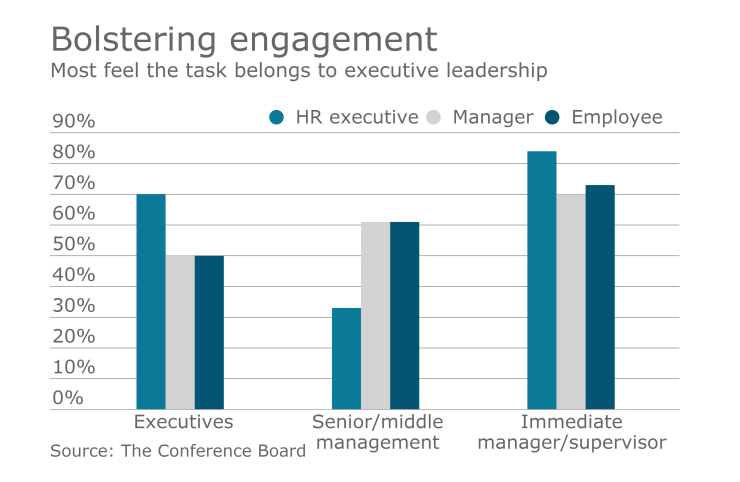Researchers warn that organizations pay a high price for failing to accomplish employee engagement. Disengaged employees reportedly cost an estimated $450 billion to $550 billion a year in the U.S., while no more than one-third of employees are truly engaged at work worldwide.
These are a few of the highlights in a new report from The Engagement Institute, a joint venture of The Conference Board, Deloitte Consulting LLP, Sirota-Mercer, ROI Institute and The Culture Works, which suggests a way to crack the code on employee engagement and boost profits. In a nutshell, corporate leaders — along with their advisers — are urged to bolster employees’ personal responsibility by regularly connecting their work to the mission of the organization, recognizing their contributions and promoting a collaborative team environment.

“It’s one thing to assume that people come to work and want to be engaged; it’s another to see it in black and white,” says Rebecca Ray, Ph.D., executive director of The Engagement Institute at The Conference Board and a co-author of the report.
One positive indicator is when employees or managers recognize which steps need to be taken if they start to feel disengaged at work. “It’s incumbent upon the organization, as well as managers and senior leaders, to think about what they are doing that removes the ability of, and perhaps the propensity to, remain engaged by these employees,” says Ray.
Also see: “
She describes employee benefits and compensation as a cornerstone of the employment contract upon which important intangibles can be built. “Part of the reason why people remain engaged in the workplace is because they feel that they have been treated with respect, and I think that respect takes many forms, not the least of which is that they’re paid fairly,” Ray explains.
Career development is a critical part of that equation. If employees feel like they don’t have additional opportunities for growth or change, then she says they’ll be more inclined to leave their employer. Sometimes, she says, they don’t understand the opportunities that are available to them because they’re simply not communicated.
Individual choices
Ray also has noticed more employers adopting a holistic view of wellness in the workplace that extends beyond physical health to also include mental, emotional and fiscal health. Those efforts include anything from onsite financial literacy programs and meditation or yoga classes to corporate cafeterias that are stocked with discounted healthy food choices.
In light of this trend, she recommends having an informed employee population that’s able to make choices that meet their individual needs. “It’s partly education, it’s partly opportunity, and it’s partly making things open and transparent for people to understand,” she says. This approach, in turn, will help people recognize great places to work and retain top talent.
Younger generations in particular value transparency, and therefore, “are less likely to put up with things that are opaque,” she believes. That means having an understanding of how decisions are made on promotions or pay raises that don’t work in their favor. “There’s so much more information available to people who can benchmark themselves against workers in other companies,” Ray says, citing Glassdoor as one helpful source.
It’s also critical to practice what’s being preached. “One of the biggest destroyers of engagement is when people say one thing and do another,” Ray says. She offers as an example instances of companies breaking a pledge to treat employees with fairness and respect, whether it’s pertaining to compensation, performance management, promotion or hiring rates.





